8 – Graphics
Copyright, Creative Commons, and Public Domain
William Meinke and Kalani Pattison
Open Educational Resources (OER), like this one, rely on working within copyright law using tools, such as Creative Commons (CC) licenses, to enable frictionless sharing and collaboration that would otherwise be difficult to manage from an intellectual property perspective. Open licenses tell others how they can use your work by explicitly granting them copyright permissions to share and adapt your work, with CC licenses being the gold standard in interoperable open licenses for content. This section explains essential aspects of copyright, Creative Commons licenses, and openly licensed content.
Copyright law varies quite widely between countries and has changed over time, particularly in how long a work remains protected by copyright law. The information in this chapter deals with U.S. copyright law. If you ever work for an international company or work with creative content produced in another country, you need to read any contracts carefully, as they may have different regulations and expectations regarding intellectual property.
Why is Copyright Important?
The copyright status of a work will (along with other factors) determine what you can and cannot do with someone else’s creative work. U.S. copyright law and patent law were originally established as part of the U.S. Constitution in order to encourage creativity and innovation. Copyright law helps ensure that creators are compensated for their work, which allows them to continue to invent and create.
In the U.S., creative works are often categorized regarding their potential use under copyright law: fully protected by copyright, in the public domain, and licensed for Creative Commons (CC) use. Knowing how to identify and differentiate between these common relationships of works to copyright will be useful when determining what content you may reuse and how.
Under current copyright laws, anything written or created is automatically protected from the moment of its creation provided it meets the criteria for copyright. There is no necessary paperwork, form, or registration to complete–if your six-year-old cousin draws a picture for you and writes a letter to you, that picture and letter would be protected by copyright.
According to Title 17 of the United States Code (The Title related to copyright law), Copyright protection applies to:
original works of authorship fixed in any tangible medium of expression, now known or later developed, from which they can be perceived, reproduced, or otherwise communicated, either directly or with the aid of a machine or device. Works of authorship include the following categories:
-
-
- literary works;
- musical works, including any accompanying words;
- dramatic works, including any accompanying music;
- pantomimes and choreographic works;
- pictorial, graphic, and sculptural works;
- motion pictures and other audiovisual works;
- sound recordings; and
- architectural works.[1]
-
The “fixed” requirement to copyright reflects that ideas, facts, or concepts are not protected. This is why sometimes it seems as if different movies or books have the same plots or the same type of character. Using someone else’s ideas or concepts without giving credit doesn’t violate copyright law (a legal issue) but is actually plagiarism (an ethical issue). Giving credit for the source of ideas, facts, and concepts is an ethical necessity, but re-using a “fixed” version of a work protected by copyright, even if you give credit (outside of certain situations–see below), is a copyright violation.
Copyright
The rights to fully copyrighted works a.k.a. All Rights Reserved (ARR) are held by the creator(s) of the work. It can be unlawful to use copyrighted works of others without their permission, and no permissions are granted in the case of ARR works. Activities such as copying, modifying, publicly displaying, publicly performing, and distributing copies of ARR work may be illegal unless legal permission is granted by the creator.
You may have seen copyright marks or statements at the beginning of books or in the credits of a film, often in the format of “Copyright [creator name] [year]” and with the Copyright symbol (see Figure 8.8[2]). These marks can be useful, but due to the automatic nature of copyright, works that have no marking should be seen as having all rights reserved—no permissions granted until you are granted them specifically from the owner of the rights.
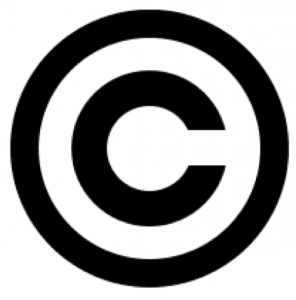
Public Domain (PD)
Work in the public domain (PD) can be reused freely for any purpose by anyone, without legally having to give credit or attribution to the author or creator, though for reasons pertaining to ethos (establishing your own credibility and reliability) and ethics (avoiding plagiarism, misattribution, and unfairness) attribution should still be given whenever possible. With few exceptions, such as being unable to claim the PD work of others as your own, works in this category can be used with great confidence, as copyright has either expired or the works were produced by the U.S. Federal Government, and so entered the U.S. PD immediately after creation or publication.
Currently in the U.S. (and in all works created in the U.S. since January 1, 1978) creative works enter the public domain 70 years after the death of the creator or 95 years after publication or 120 years after creation, (whichever expires first) if it is a work made for hire, anonymous, or pseudonymous. Work “made for hire” is work done for and under the direction of a company. Individual animators at a film studio, for instance, don’t own the copyright for their work–the company does. Whether individuals or companies own the copyright to work created in the workplace depends a lot on disciplines, fields, and locations. Occasionally, employment contracts even extend the company’s copyright to works created by the employee unrelated to the individual’s job. Be sure to read any contract carefully to see who will own the work you create.
Works published before 1978 and after the 1920s mostly had an original 28 year protection, followed by an renewal which may or may have been automatically given–works created before 1926 are all in the public domain (as of 2021).
Creative Commons (the organization) created a legal tool called CC0 (pronounced "see-see-zero") to help creators place their work as close as possible to the public domain by releasing all rights to it. The following Figures 8.9[3] and 8.10[4] demonstrate what two marks you may find on certain works to convey the rights of public domain.
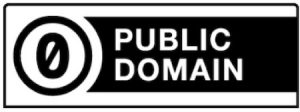
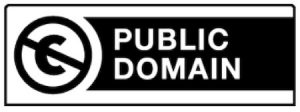
Creative Commons (CC)
Creative Commons (CC) is a non-profit organization that offers free legal tools to make creative work more shareable. Composed of combinations of four different elements (see Table 8.3 for a description of each major element[5]), there are six different CC licenses that explicitly grant permission for others to use your work in certain ways, forming a spectrum of openness. The most open CC licenses require only attribution (giving credit), but otherwise permits nearly any use imaginable. The less open licenses include components that limit or prevent commercial reuse and modification.
CC license marks are visible symbols telling others that work can be reused without requiring direct contact or permission from the creator. Properly applied to digital content, a CC license contains a link to a human-readable description of the license with a further link to the legal deed behind the license. (See Table 8.4[6]).
Table 8.3. Creative Commons elements
| Creative Commons Element Type | Meaning | Creative Commons Image |
|---|---|---|
| BY | Credit must be given to the creator | 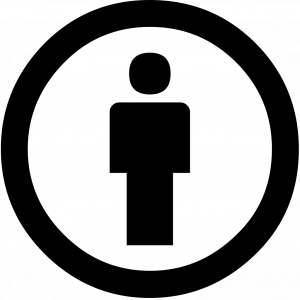 |
| SA (ShareAlike) | All adaptations must be shared using the same licenses. | 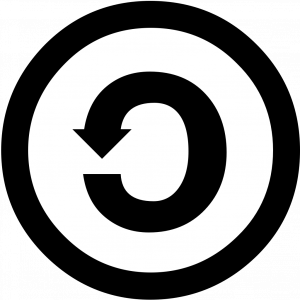 |
| NC (NonCommercial) | Only noncommercial uses of the work are permitted | 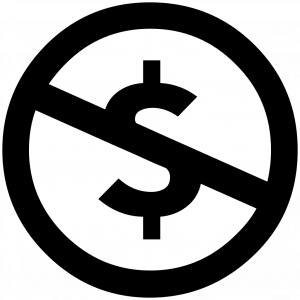 |
| ND (No Derivatives) | No derivatives or adaptations of the work are permitted. The work may not be altered by future users. | 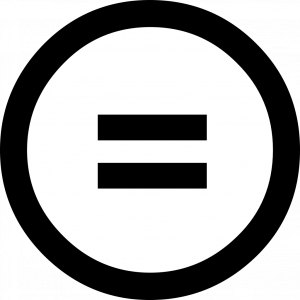 |
Table 8.4. Creative Commons Licenses
| License Type | Description of license from Creative Commons. | Creative Commons Image |
|---|---|---|
| CC BY | This license allows reusers to distribute, remix, adapt, and build upon the material in any medium or format, so long as attribution is given to the creator. The license allows for commercial use. | 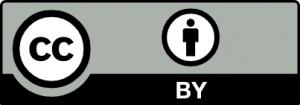 |
| CC BY-SA | This license allows reusers to distribute, remix, adapt, and build upon the material in any medium or format, so long as attribution is given to the creator. The license allows for commercial use. If you remix, adapt, or build upon the material, you must license the modified material under identical terms. | 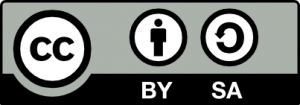 |
| CC BY-NC | This license allows reusers to distribute, remix, adapt, and build upon the material in any medium or format for noncommercial purposes only, and only so long as attribution is given to the creator. | 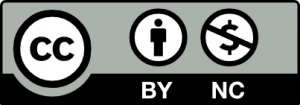 |
| CC BY-NC-SA | This license allows reusers to distribute, remix, adapt, and build upon the material in any medium or format for noncommercial purposes only, and only so long as attribution is given to the creator. If you remix, adapt, or build upon the material, you must license the modified material under identical terms. | 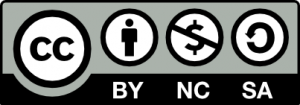 |
| CC BY-ND | This license allows reusers to copy and distribute the material in any medium or format in unadapted form only, and only so long as attribution is given to the creator. The license allows for commercial use. |  |
| CC BY-NC-ND | This license allows reusers to copy and distribute the material in any medium or format in unadapted form only, for noncommercial purposes only, and only so long as attribution is given to the creator. | 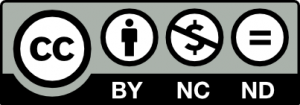 |
There are many sites that publish collections of images or other media using the CC0 licensing or other CC licenses. If you are looking for works to incorporate into your own (for entertainment, work-related presentations, etc.), these are a good place to start. Another source of media and images is Wikimedia Commons–the repository for images and media used on Wikipedia. Always look for the specific license that a work is published under on the original webpage, rather than trusting an “image search,” and scroll down on the relevant Wikimedia page to see the specific license and requirements given.
Overall, copyright protection and various licenses provide a range of openness for various works.
Fair Use
Fair use is not a copyright status but a copyright principle that suggests that the public can make certain uses of works still protected by copyright without permission. According to Title 17, Chapter 1, section 107, works can be used without violating copyright “for purposes such as criticism, comment, news reporting, teaching (including multiple copies for classroom use), scholarship, or research.”[7]
Whether or not a specific use falls under Fair Use is determined by four factors:
- the purpose and character of your use,
- the nature of the copyrighted work,
- the amount and substantiality of the portion taken, and
- the effect of the use upon the potential market.[8]
You should use these principles to make your best determination regarding fair use, but fair use can be complicated and interpreted in different ways by different courts and judges, so be cautious.
Thus far in your life, your use of media has most likely been covered by “educational fair use,” that is, fair use for the purposes of teaching or scholarship. For instance, if you ever googled an image to insert as part of a class presentation and used a popular image that was likely protected by copyright, your use of the image would have been considered fair use because it was part of a “teaching” scenario. If, however, you were to find that same popular image and use it in a work-related presentation, then you would most likely be considered in violation of copyright. Out of the context of non-profit education, you need to be much more careful about how you find and repurpose media.
In order to avoid getting yourself (or your company) into legal trouble, be very careful how you use text, images, media, clips, and even memes within the workplace or when creating materials for your workplace, and be sure to consult with your company’s lawyers when necessary.
Regardless of copyright status—whether you are using works in the public domain, licensed with Creative Commons licensing, or protected by copyright—remember that you are obligated to cite your sources for media (images, sounds, clips), tables, charts, and graphs just as you are for the words you borrow, or you risk plagiarism (and ethical violation) even if you aren’t breaking the law. Normally, this is done in either the table title or in a footnote just below the table. Figure 8.3 is an example in this chapter.
For more information on citing sources of information and details on the contents of source citations, see Chapter 12: Avoiding Plagiarism and Citing Sources Properly.
This text was derived from
Meinke, William. “Copyright, Creative Commons, and Public Domain.” In UH OER Training. University of Hawai’i Outreach College, 2018. https://pressbooks.oer.hawaii.edu/oertraining2018/chapter/copyright-creative-commons-and-public-domain/. Licensed under a Creative Commons Attribution 4.0 International License.
- 17 U.S.C. § 102(a) https://www.copyright.gov/title17/92chap1.html. ↵
- Copyright.svg, uploaded September 21, 2021, Wikimedia Commons, https://commons.wikimedia.org/wiki/File:Copyright.svg. In the public domain. ↵
- Creative Commons, Public Domain Mark, digital file, Creative Commons, accessed October 15, 2021, https://creativecommons.org/about/downloads. ↵
- Creative Commons, CC0, digital file, Creative Commons, accessed October 15, 2021, https://creativecommons.org/about/downloads. ↵
- Table content and images derived from Creative Commons, "About CC Licenses," accessed March 11, 2022, https://creativecommons.org/about/cclicenses/ ↵
- Content from Creative Commons, About CC Licenses, accessed March 11, 2022, https://creativecommons.org/about/cclicenses/; Images from Creative Commons, BY, BY SA, BY ND, BY NC, BY NC SA, BY NC ND, digital files, accessed October 15, 2021, https://creativecommons.org/about/downloads. ↵
- 17 U.S.C. § 107 https://www.copyright.gov/title17/92chap1.html#107. ↵
- 17 U.S.C. § 107 92chap1.html#107. ↵
Copyright principle that allows for certain public uses of works still under copyright.
